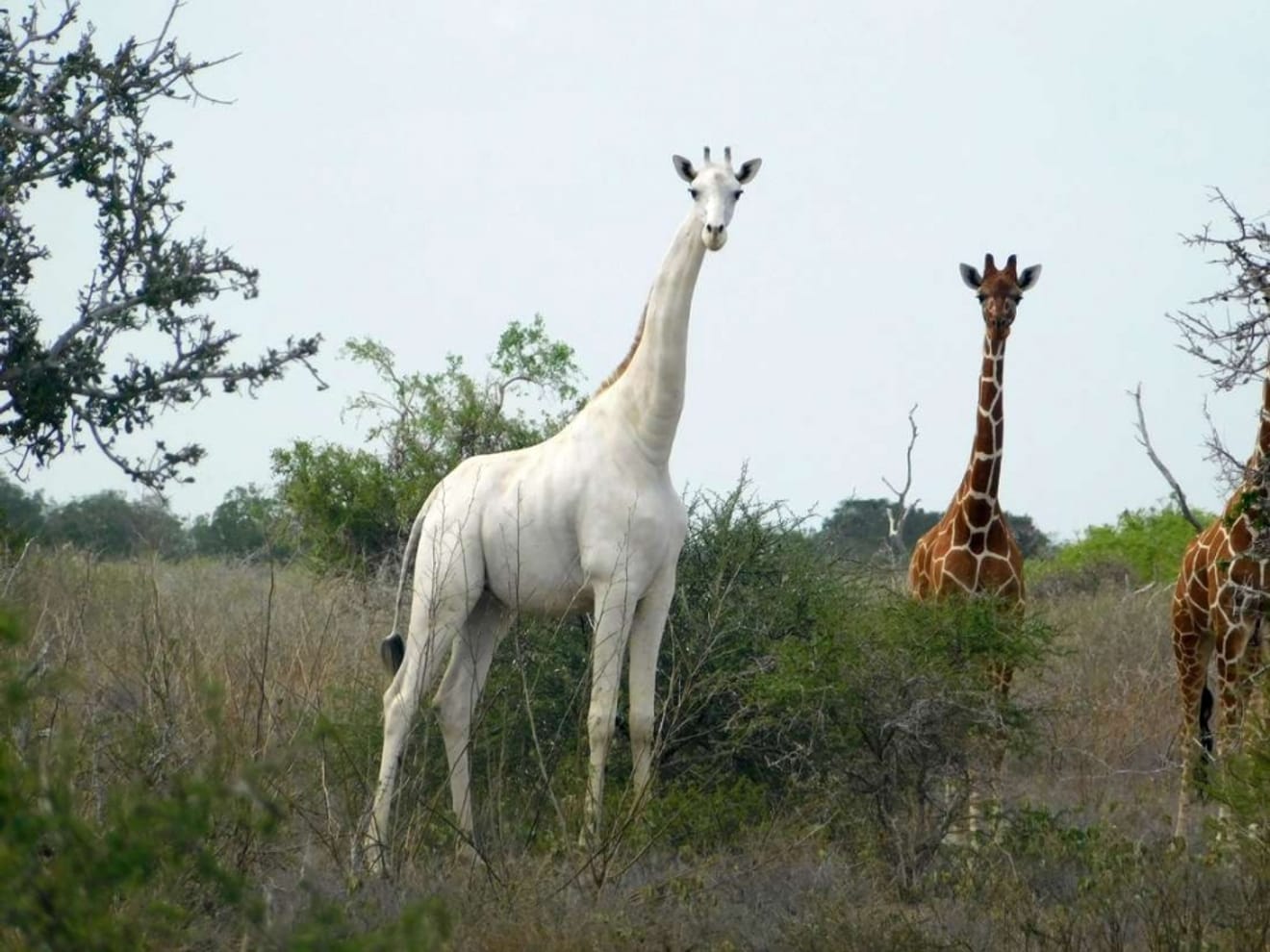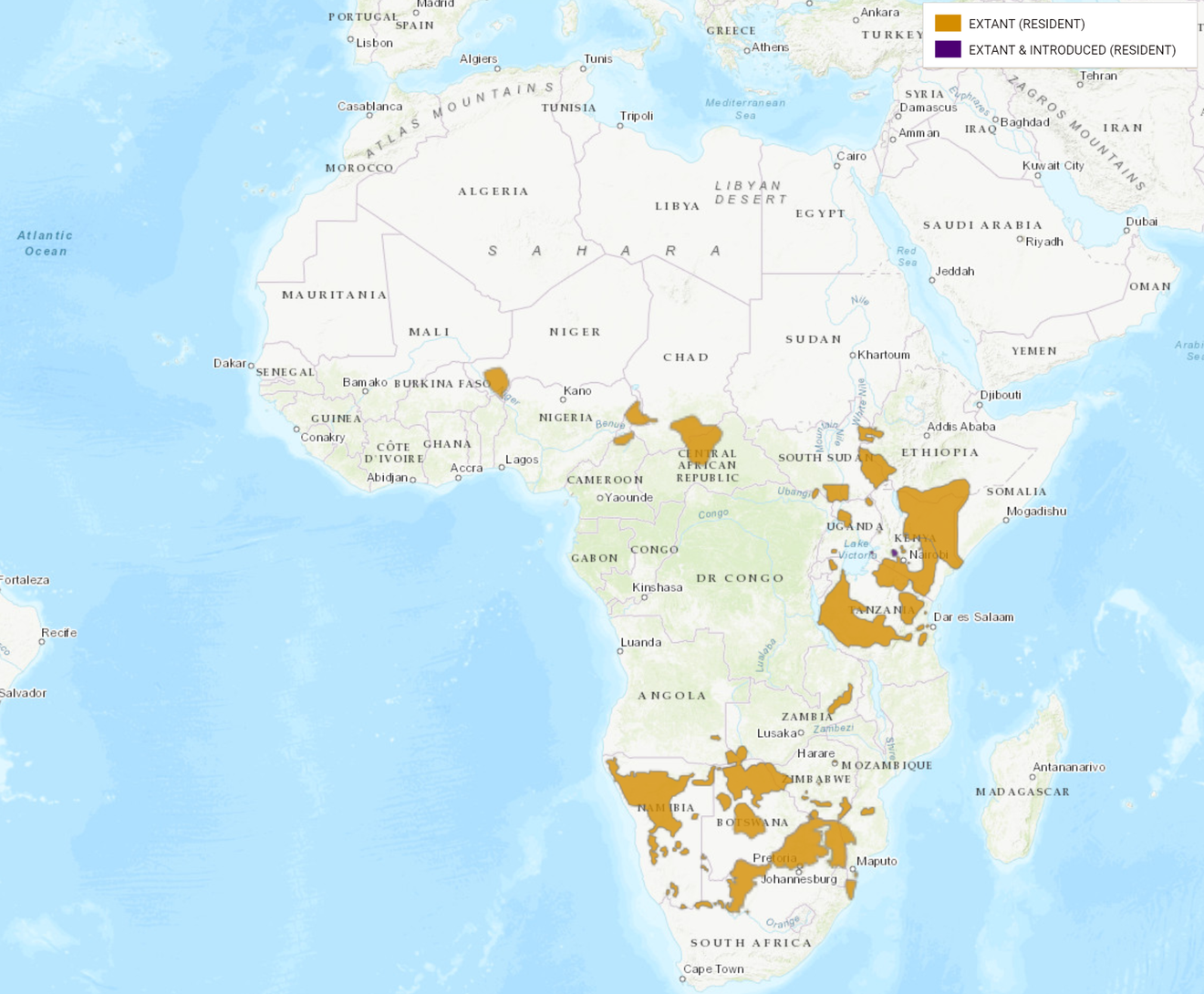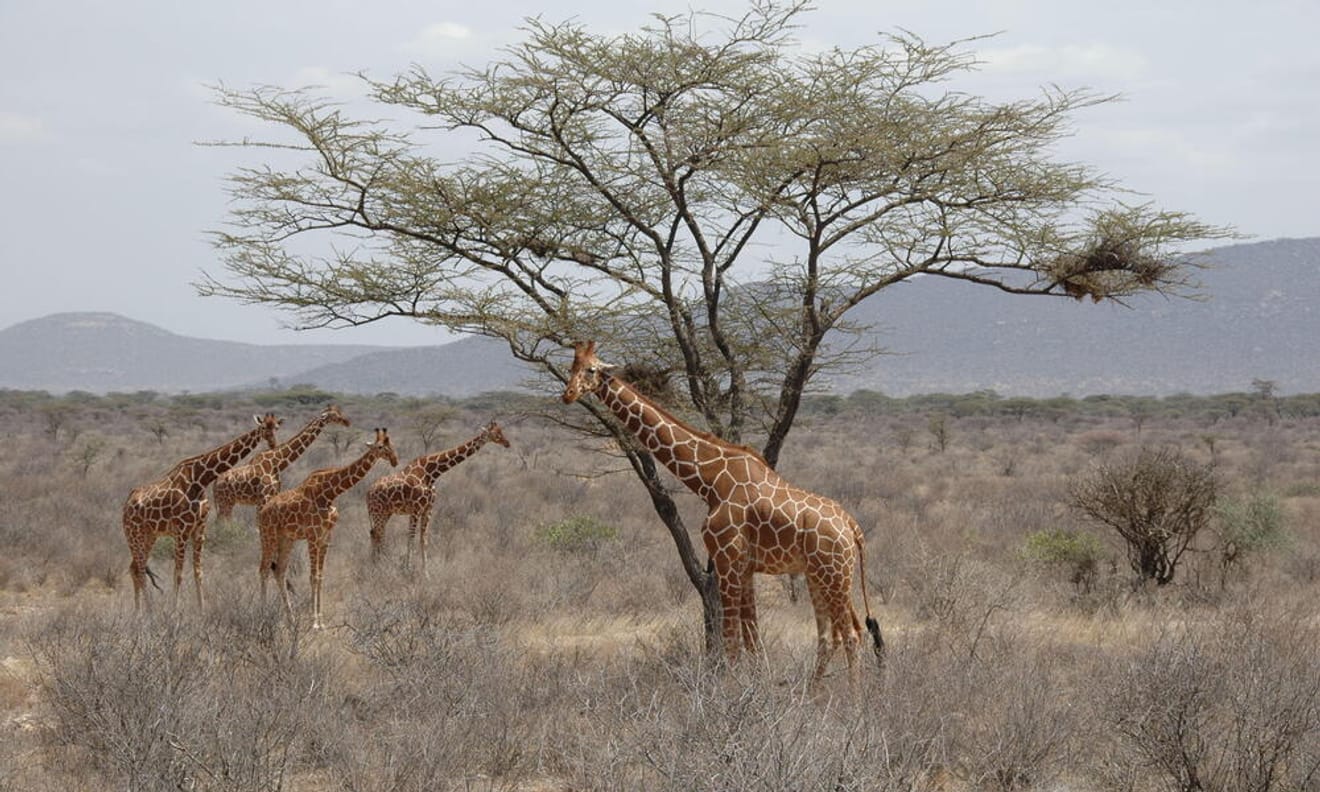Subject
- #Endangered Species
- #Extinction
- #Africa
- #White Giraffe
- #Giraffe
Created: 2024-01-22
Created: 2024-01-22 14:30
When you think of a 'giraffe', you usually imagine an orange one with spots, right? But did you know that there are giraffes that are completely white from head to toe?

Hirola Conservancy
Actually, there's no separate species called a white giraffe. It's said that they are giraffes born with a genetic disorder. They are born with a rare genetic condition called leucism (or albinism), which causes a loss of pigmentation, making their entire body white except for their eyes. Until 2020, only three white giraffes were known to exist on Earth, but two were killed by poachers, leaving only one. The Kenya Wildlife Service is monitoring the lone remaining white giraffe by attaching a GPS to its horn.

IUCN
However, it's not just the white giraffe that's facing extinction. The common giraffes we know are also endangered.
Giraffes are classified as endangered by the International Union for Conservation of Nature (IUCN). Giraffes are listed as Vulnerable (VU), meaning they are at high risk of extinction in the wild within a few months or years. Currently, there are about 68,000 giraffes worldwide. However, the giraffe population has decreased by over 90% compared to 100 years ago. And the population continues to decline.

IUCN
Giraffes, once widely distributed across Africa in countries like Cameroon, the Central African Republic, Ethiopia, Mozambique, Kenya, and Tanzania, have already become extinct in some African nations. The United Nations Environment Programme (UNEP) announced in 2020 that giraffes had become extinct in seven African countries, including Senegal, Nigeria, and Guinea. If things continue this way, giraffes might disappear from other countries where they still exist.

IUCN
The most significant reason for giraffes' endangerment is habitat loss. Human development and environmental destruction caused by climate change have led to a decrease in the vast grasslands where giraffes roam. The loss of habitat has deprived giraffes of their living space and food sources. Giraffes rely on tall trees for leaves, but human activities like clearing grasslands for development have resulted in deforestation, leaving giraffes without food. Furthermore, activities such as building fences for farms have also impacted giraffes. Although they are tall, giraffes cannot jump over fences, making it difficult for them to freely roam in search of habitats. While some giraffes do venture out to distant areas, they sometimes get hit by cars while trying to cross highways built by humans.
When giraffes' habitats shrink, they are forced to live in smaller groups. Breeding within small groups increases the likelihood of genetically vulnerable giraffes being born. This leads to a loss of genetic diversity, further reducing the chances of giraffes overcoming their endangered status.
Poaching by humans is also a threat to giraffes. Because giraffes haven't been recognized as endangered for long, and the awareness about their endangerment is still low, they are often illegally hunted. In the US, trading giraffe bones and hides is not illegal, which has led to a surge in poaching. The Wildlife Conservation Society (WCS) has argued that the illegal trade in giraffes must be stopped due to their endangered status.

WWF
Climate change has also resulted in heavy rainfall in giraffe habitats. Heavy rains can be dangerous for giraffes, leading to higher mortality rates. Increased rainfall can also lead to a surge in parasites and microorganisms, increasing the risk of disease. Additionally, plants that grow rapidly due to heavy rain often lack nutrients, impacting the nutritional status of giraffes. Conversely, frequent droughts caused by climate change are also a major challenge for giraffes.

WWF
The reasons behind the endangerment of giraffes are complex and multifaceted. However, the most crucial issue is the shrinking of their habitats. It seems necessary for environmental organizations and African governments to collaborate to protect giraffe habitats.
Comments0